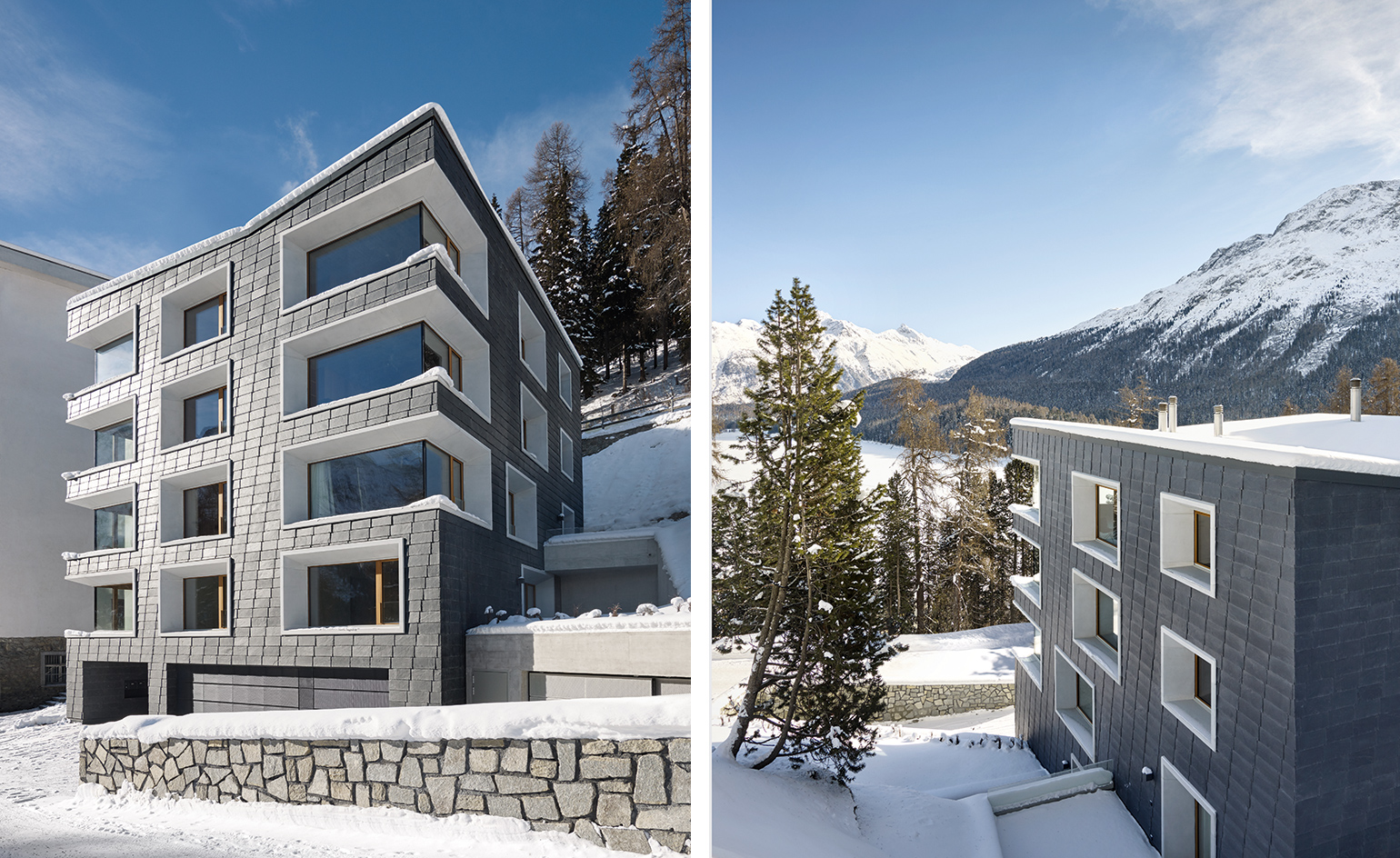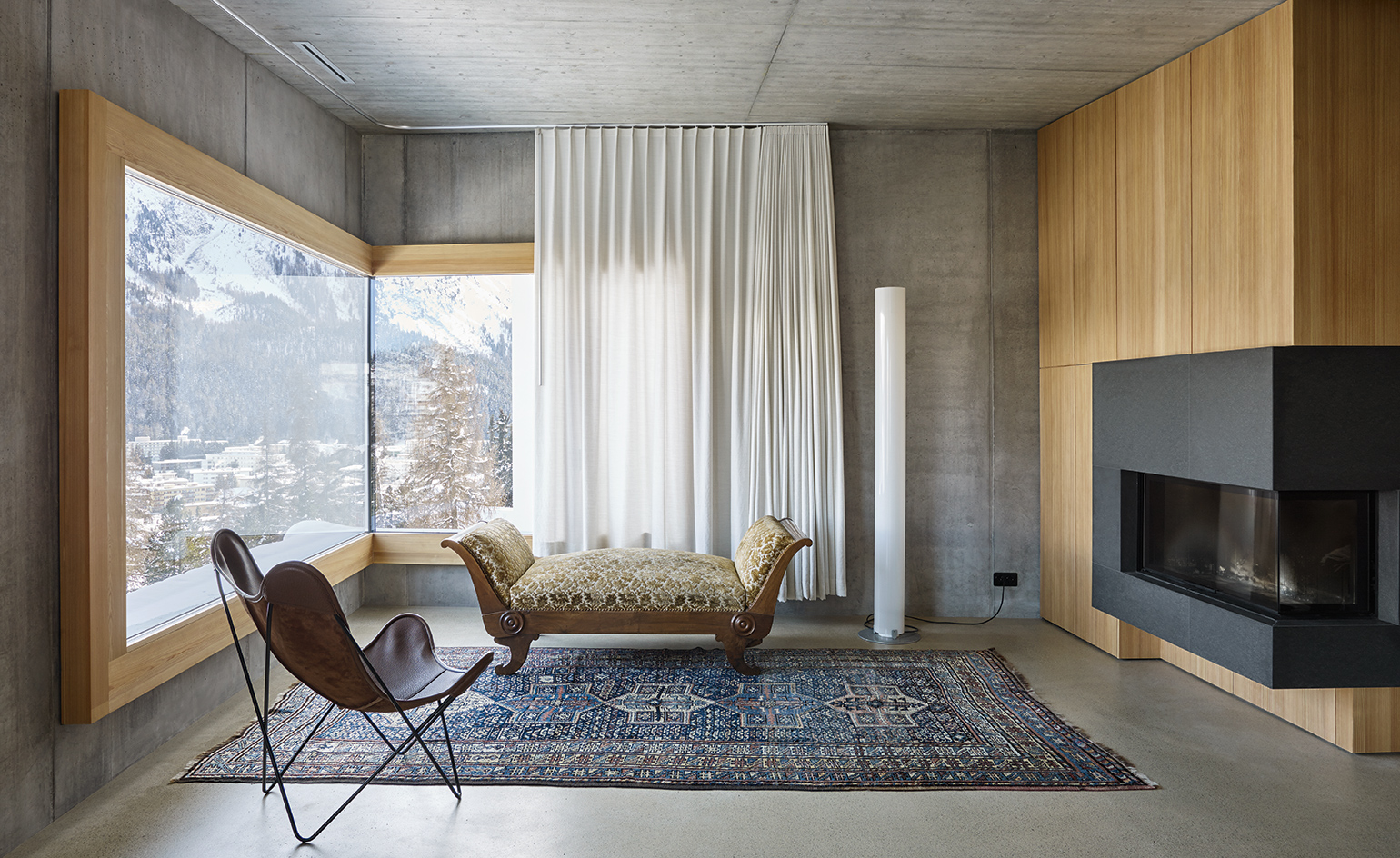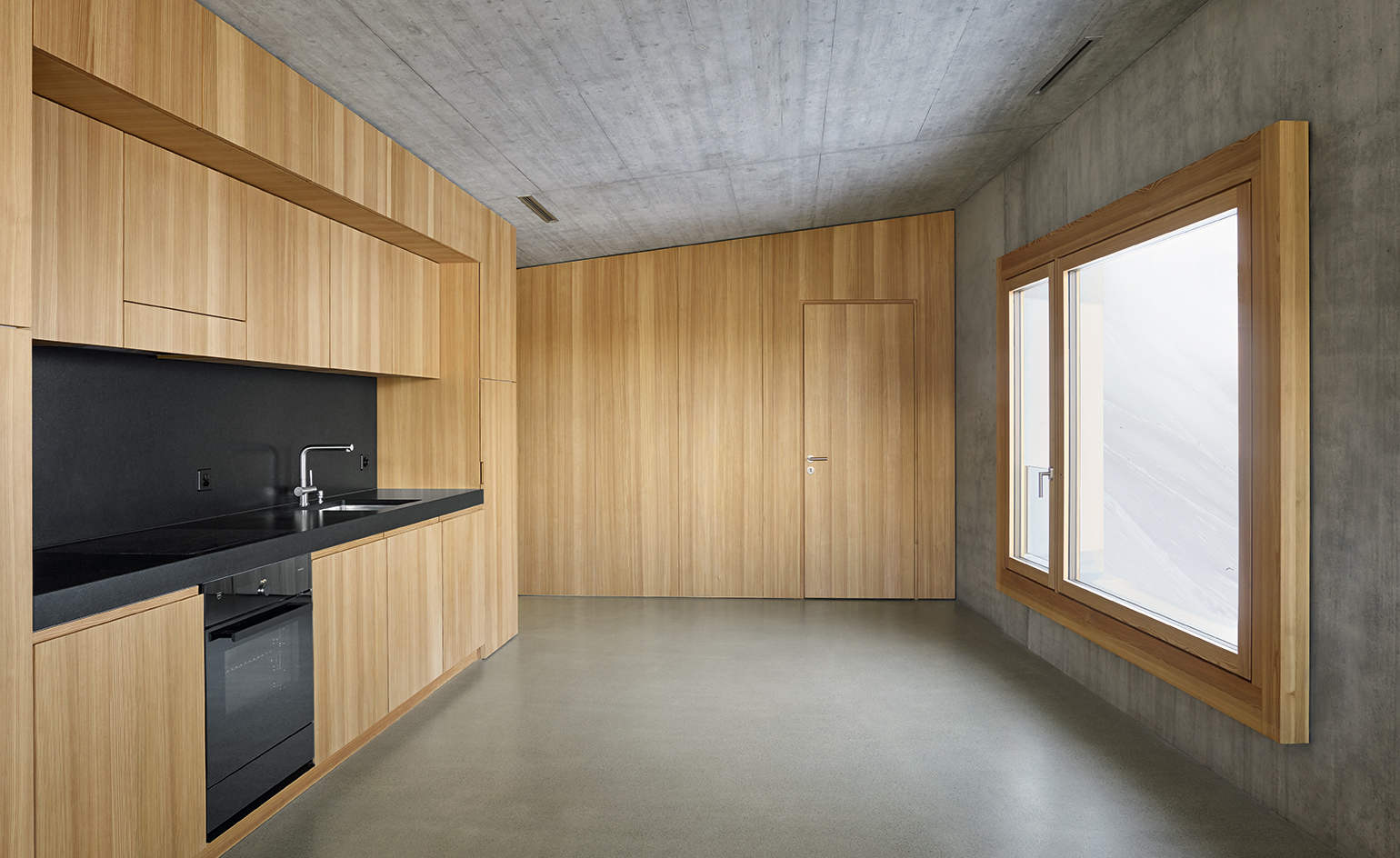Heir lift: a Swiss architect rebuilds a family legacy in St Moritz

Swiss architect Lorenzo Giuliani’s work is strongly connected to his home country. He studied at ETH Zurich, then set up practice with fellow student Christian Hönger in 1991, forging a successful career out of winning and building competition designs for large public contracts, predominantly between Bern and Chur. The buildings of Giuliani.Hönger are precise, well balanced and pleasing to the eye. They are the epitome of ‘Swissness’ (if we stoop to national stereotypes) in terms of their relationship to their location and the quality and use of materials, yet what makes them particularly interesting is their treatment of window openings and the magnificent views they are able to create.
Giuliani is also the fortunate heir to a magnificent view of his own. Over a century ago, his grandfather, a master craftsman, bought a house just above Lake St Moritz, overlooking a panoramic mountain landscape that takes in the Schafberg, the Piz Languard and the Stazer Forest; a view that inspired artist Giovanni Segantini back in the 19th century. In fact, the Segantini Museum is across the road.
The house, which was altered and extended in the 1960s by Giuliani’s father, passed down to him and his two sisters a few years ago, and so the task of adapting the ancestral home to accommodate the requirements of the three siblings fell, naturally, to the architect in the family – who promptly tore it down.
To be fair, the old house had nothing much going for it architecturally, and its sentimental value, although strong, was outweighed by the many requirements it was unable to fulfil. It didn’t take maximum advantage of the view or its proximity to a very attractive museum building, and now it also needed to provide second homes for three siblings and their families, plus two additional apartments; one for a local resident and one high-end holiday apartment that could be sold to help finance the rebuild. ‘This is not just a house for myself,’ says Giuliani. ‘It is for my closest family, my wife, my children, my sisters, their spouses and their children. But, as with my other buildings, I have tried to withdraw a bit from the personal aspect in order to consider the context.’
This is where the ‘Swissness’ comes in to play: this love of tradition, the pragmatic approach and complete lack of fear of the modern. Giuliani grew up in St Moritz, so he has an intimate relationship with the place, the landscape and the local building traditions. But the old house did not fit the needs of its new owners, so he designed a new structure that opens out toward the view, with the hillside behind it. The roof is inverted in form, dipping downwards in the centre, distancing itself from the surrounding vernacular; while the walls, picking up on the tiled cupola roof of the neighbouring museum, are covered in a scaly skin of local slate.
The white, deep-set windows also reference local Engadine tradition, but their generous proportions are something new. On the outside, they give a sense of security and solid mass, but on the inside the windows become larch-rimmed picture frames of the vista beyond. This inside/outside contrast comes together neatly at the building’s corners where the windows wrap around the edges, tearing great chunks of mass out of the structure and leaving glassy lightness in its stead. From within, these corner windows amplify the vistas with a stunning panorama.
With such views taking centre stage, everything inside was kept very simple. On the top two floors, where the Giuliani clan have their apartments,there are untreated concrete walls, a poured anhydrite floor, and fitted cupboards, doors and window frames made from local larch. The whole house is at once very contemporary and very traditional. Which is why the highly ornate carved wood dining table and chairs and other antique furniture floating on Persian rugs in the main living spaces all seem to be as at home as the almost brutally bare walls and ceiling, and the protruding window frames.
So is this house a ‘Swiss’ house in the eyes of the architect? ‘This house tries to interpret the alpine domestic architecture of the Engadine region,’ says Giuliani. ‘It also has a concrete involvement with the landscape and, being Swiss, the execution and the details are, of course, very precise! And then, it is also a Swiss house because that is how we as a firm laid our foundations, in terms of our education, training and experience.’
But there is more to Giuliani.Hönger than that. Giuliani believes that the need to verorten (locate) their buildings in a similar manner to, say, Sergison Bates or Caruso St John in the UK, means that each structure has a very specific and unique relationship with where it is, and this genius loci overrides any formal predisposition on their part. If you had grown up with a view like that, it would be hard to think otherwise; sometimes location is everything.
As originally featured in the April 2016 issue of Wallpaper* (W*205)

The house is both contemporary and traditional in style, complemented by old Persian rugs and modern and antique furniture

Interiors are kept simple with concrete walls, anhydrite floors and larch fittings
INFORMATION
For more information, visit Giuliani.Hönger's website
Photography: David Willen
Receive our daily digest of inspiration, escapism and design stories from around the world direct to your inbox.